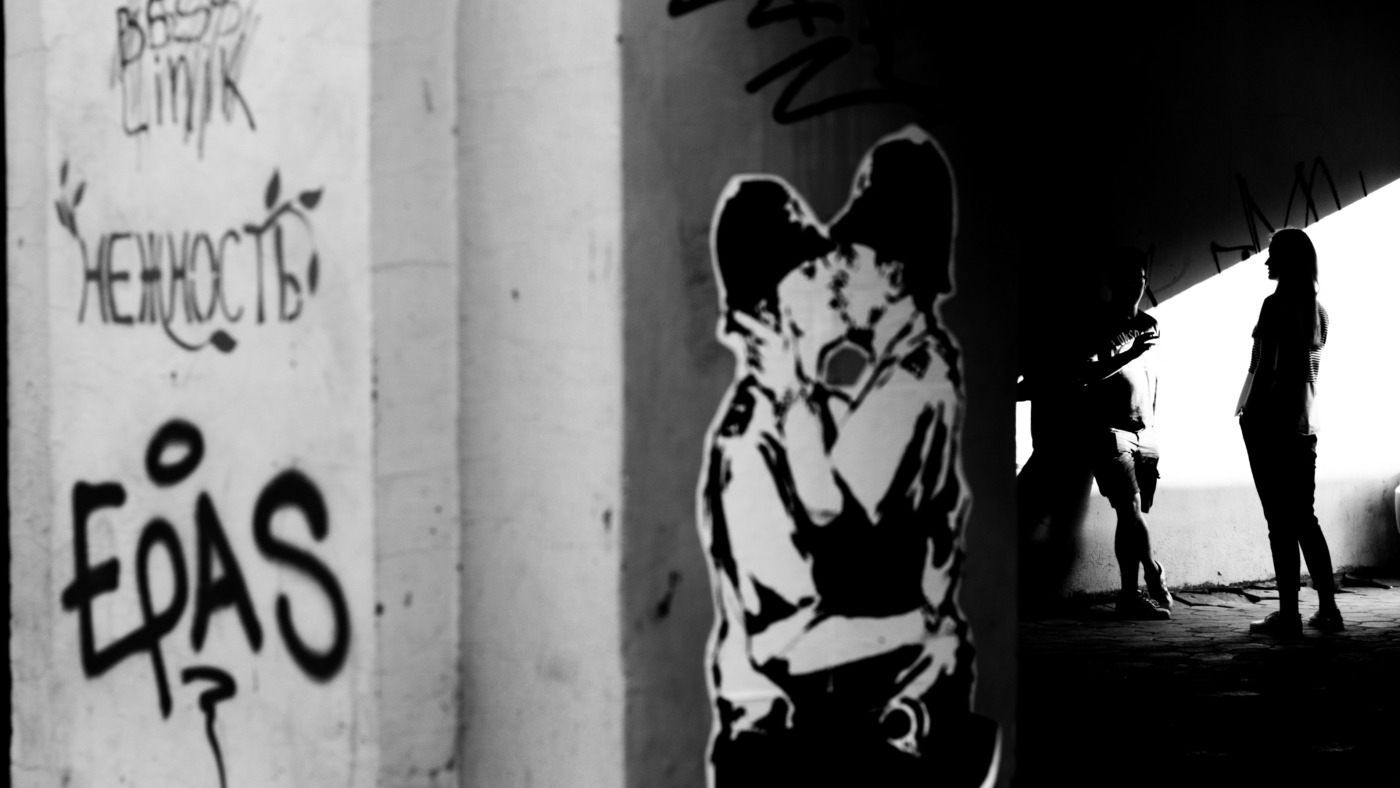Banksy: his mission to make art more accessible for all
Banksy has once again returned to the spotlight of the media, largely due to two contradicting events: his ‘Devolved Parliament’ sold for a record price of over £9 million, and he recently ‘opened’ his free-of-charge gallery in Croydon, where you can buy his works for as little as £10.
A creator of provocative, political and very visible art, he is also an eye-opener
Banksy – for some a street artist and a hooligan; for others a genius of modern art – is probably on a social mission. A creator of provocative, political and very visible art, he is also an eye-opener. He raises awareness for issues that we ourselves might not see within society; “art is about revealing truths – Banksy’s almost always does that” writes BBC Arts editor Will Gompertz.
After ‘Devolved Parliament’ was sold, Banksy posted on his instagram a quote from art critic Robert Hughes: “Art should make us feel more clearly and more intelligently. It should give us coherent sensations that we otherwise would not have had. But the price of a work of art is now part of its function, its new job is to sit on the wall and get more expensive.
“Instead of being the common property of humankind the way a book is, art becomes the particular property of somebody who can afford it. Suppose that every worthwhile book in the world cost $1 million – imagine what a catastrophic effect on culture that would have.”
The post was simply captioned: “Record price set for a Banksy painting at auction tonight. Shame I didn’t still own it.”
All these events point to one line of thought – art, its value and its accessibility to the public.
A recent fight with the card company trying to merchandise Banksy’s works, thus also disrespecting morals that the artist stands for, resulted in the creation of ‘Gross Domestic Products’, the real ‘shop’ of Banksy’s ‘impractical and offensive’ merchandise. This has allowed the artist to seize the legal claim of his name while responding to the challenge posed by the question of who owns art.
Visiting Banksy’s gallery is free, and you can buy his art for as little as £10
The mysterious artist ‘opened’ his gallery just in time for Frieze Week, a highlight of the cultural calendar in which galleries and museums host special events. Whereas ticket prices for this start at £38.70, visiting Banksy’s gallery is free, and you can buy his art for as little as £10 – even the Union Jack stab-proof vest worn by Stormzy at this year’s Glastonbury festival costs as little as £850.
As journal Dezeen writes: “The products each have tongue-in-cheek descriptions. For example, the baby mobile is designed to ‘prepare your little one for the journey ahead – a lifetime of constant scrutiny both state-sanctioned and self-imposed’.”
Items are limited to one per person and are available only online. Before purchasing something you must answer a question: “Why does art matter?” It is the answer to this question that determines whether or not the sale goes through.
To judge this, Banksy chose ‘an impartial and independent’ stand-up comedian, Adam Bloom. Banksy understands that he cannot weed out all the people looking for profit who will simply resell the item later to the open market. But he does say that “we can weed out the unfunny ones”.
Banksy wants people to buy his art because they like it, not because they think it’s profitable
Some believe this control he has imposed “is becoming part of an artwork itself”. Perhaps it is an encouragement for people to think of the place of art in the modern world. Ultimately, Banksy wants people to buy his art because they like it, not because they think it’s profitable.
Catherine Borowski, a founder of Produce UK and practising artist, points out the importance of location of the gallery. Banksy’s choice to place it in Croydon, often considered “the poor relation to London proper” has its meaning: that art is for the public of all social classes. The exhibition is also open 24/7 and anyone can be viewed by anyone. Borowski believes that there might be a more ‘Banksian’ message in the location, suggesting that it could have opened in the near vicinity to the mysterious card shop.
With the prices so low and the shop’s location in the boroughs of London, Banksy makes society question the true meaning and value of art. As Borowski says: “He makes art for everyone and still manages to remain respected, relevant and a leading figure in the art world.”

Comments